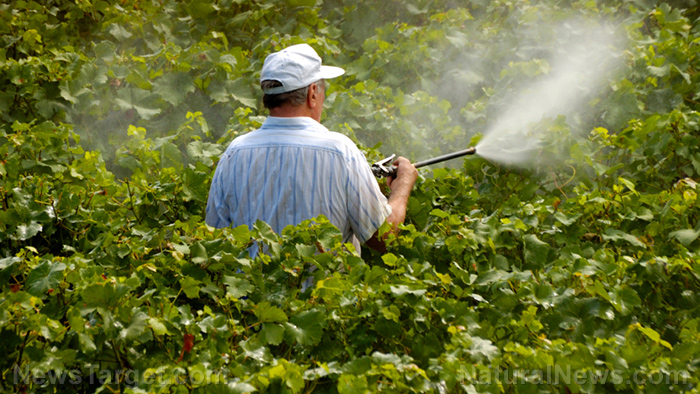Amitrole – toxicity, side effects, diseases and environmental impacts
11/28/2017 / By Frances Bloomfield

Amitrole is a chemical marketed as a non-selective, systemic triazole herbicide intended for use on annual grasses, broadleaf weeds, poison ivy, and aquatic weeds. Known as amino-triazole in Great Britain and France, amitrole has been banned from being utilized on food crops in 1971 by the United States Environmental Protection Agency (EPA) due to the cancer it purportedly caused in experimental animals.
The cancer-causing reputation of amitrole was such that it created the Cranberry Crisis of 1959, the first nationwide food panic in the U.S. Arthur Flemming, then-secretary of the United States Department of Health, Education and Welfare (now the United States Department of Health and Human Services), warned that cranberries from Oregon and Washington were contaminated with potentially harmful levels of amitrole. This event became the first enforcement of the Delaney Clause, an amendment that prohibited the use of any carcinogenic food substance.
Amitrole has since been deemed a Restricted Use Pesticide, meaning that amitrole can be only be purchased and utilized by certified applicators. Those who purchase amitrole can buy it as a soluble powder, soluble concentrate, wettable powder, liquid solution, water dispersible granules or suspension concentrate.

List of known side effects
Based on various studies, amitrole is “reasonably anticipated to be a human carcinogen.” Laboratory animals were reported to have liver, thyroid and pituitary tumors following administration in feed and drinking water. Though no similar effects have been observed yet in humans, amitrole remains a possible human carcinogen.
Furthermore, amitrole is a possible reproductive toxin as well. Though no significant effects have been noted on lab animals, baby rats and mice who were given amitrole developed atrophied spleens and thymuses, and died shortly after.
Amitrole is known to cause acute toxicity in humans, the symptoms of which range from diarrhea to vomiting to skin rashes to nosebleeds. Additionally, amitrole is considered to be a health hazard because of its toxicologic properties. Exposure or contact with this chemical has been found to result in muscle spasms, dyspnea or breathing difficulties, increased body temperatures, skin dryness and ataxia or lack of voluntary coordination of muscle movements.
Amitrole was thought of as non-flammable, but heating this substance will cause it to emit highly toxic fumes.
Though not toxic to birds, amitrole is said to be slightly toxic to freshwater fish and invertebrates.
Body systems affected by amitrole
Amitrole is known to target the eyes, skin, and thyroid. Prolonged or repeated exposure to this chemical can lead to organ damage.
Items that can contain amitrole
Though banned from use on food crops in the U.S., other countries continue to utilize amitrole for such purposes. As per the Food and Agriculture Organization of the United Nations (FAO), Australia uses amitrole on:
- Avocados
- Bananas
- Cereal grains
- Grapes
- Passion fruits
- Pecans
- Pineapples
- Potatoes
- Sugar cane
In Spain, amitrole is utilized on olives, grapes, and hazelnuts.
How to avoid amitrole
Amitrole should always be kept in an area without sewer access or drainage to prevent it from entering bodies of water. This substance should be separated from food, strong acids, strong oxidants, acid chlorides and acid anhydrides as well.
In case of spillage, amitrole should first be dampened with water then transferred to a suitable container using absorbent paper. All contaminated surfaces should then be washed with a solution of soap and water.
Amitrole is sold under a variety of trade names, including but not limited to:
- Amerol
- Amino
- Amizine
- Amizol
- Azolan
- Azole
- Cytrol
- Diurol
- Triazole
- Weedazol
Where to learn more
- The European Union just banned two pesticides linked to infertility and reproductive problems… both still widely used across America
- Chemicals.news
- Pesticides.news
- Poison.news
- Toxins.news
Summary
Amitrole is a chemical that has since become infamous as a potential carcinogen. The toxicologic properties of amitrole are such that it can cause a wide range of health problems, depending on the route of exposure and dosage. Among these health complications are diarrhea, nosebleeds, skin dryness, and breathing difficulties. Amitrole is a possible reproductive toxin too.
Sources include:
Tagged Under: Amitrole



















